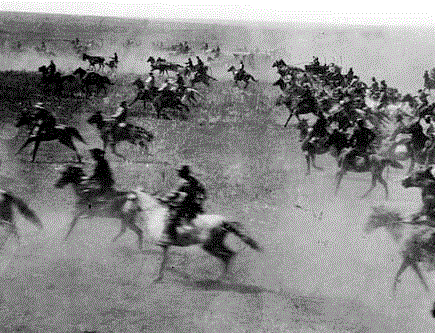Boarding School and Land Allotment Eras 1879-1933
1887-1934
General Allotment Act (Dawes Act) of 1887

Congress passes the General Allotment Act, better known as the Dawes Severalty Act (Dawes Act), which ends the reservation system by authorizing the federal confiscation and redistribution of tribal lands. The intent of the Act is complete dissolution of tribal landholdings and the systematic destruction of tribal leadership and authority. During the 40-year period (1887-1934) during which it is in effect, more than 60 percent of the remaining Indian land base passes into non-Indian hands (over 86 million acres). The Act divides Indian lands into 160-, 80-, and 40-acre parcels for distribution to individual Native families who are listed on government-administered tribal roles. The remaining surplus lands (i.e., unassigned lands) are put to sale to American settlers or development companies such as timber companies. The government rolls designate tribal people as “federally enrolled members” of the tribe and assign a blood quantum along with the enrollment. The blood quantum designation is determined by the officiating agent, who often is a shareholder or leader of the timber industry (this is the case in Oklahoma). Indians whose blood quantum is less than half receive immediate parcels of land, whereas Indians who are deemed to be 1/2 or more have their lands kept from them and held by the government “in trust” for 25 years or until they are deemed “competent and capable of managing his or her affairs.” As a result, Natives are incentivized to mis-identify their blood quantum as just under 1/2 (e.g., 3/8) to gain immediate access to their lands. Moreover, White settlers also fraudulently enroll as Native, or they pay property taxes on the lands safeguarded under the 25-year trust period and literally steal the land out from under the Native trustees. In some cases, Native women are outright murdered for the land, and later for oil discovered under the lands. “As land is leased or sold for development, housing, or farms, Indians lose access to traditional hunting, fishing, and gathering sites. Wild foods important to Indians diets since time immemorial become extinct or inaccessible, forcing families to rely on government rations” (Native Voices, “1885: Alaska regions assigned to religious denominations”).